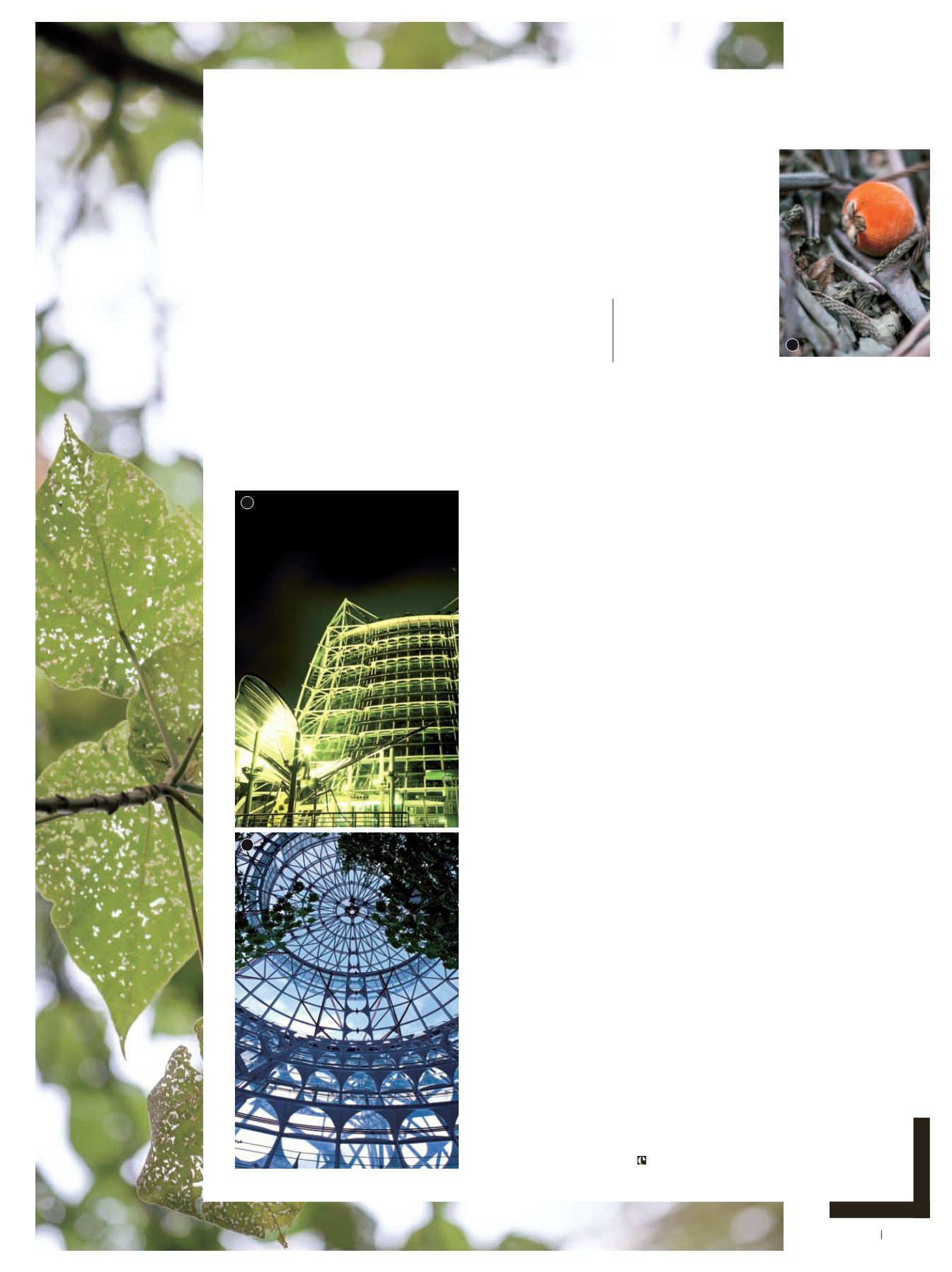
1-2
The Tropical Rainforest Conservatory at
the National Museum of Natural Science in
Taichung contains a waterfall and an aquari-
um.
3
Garcinia Subelliptica
trees at Beizihtou
Botanical Garden produce strikingly colored
fruit.
1-2
̨ʕ߅ኪ௹
ي
ٙᆠ੭
؍ڠ
܃lzdৰəᅼ
Ꮭᆠ੭
؍ڠ
ٙ͛࿒ᐑྤdᒔϞɓࢭᓬ̺ၾɓ
ࡈ
˥
ૄf
3
˺᎘ಔ
ي
၇ಔٙിࢥ၅˝dՉഐ
̈ٙЍ
؈
ྼኹϞփतٙঔբf
Residents of Taichung and Chiayi have botanical gardens on their
doorsteps. Taichung Botanical Garden is managed by, and located a
stone’s throw from, the National Museum of Natural Science. More
than 700 plant species are crammed within its 4.5 hectares.
The garden’s highlight is undoubtedly the Tropical Rainforest
Conservatory. This is no bland conventional greenhouse, but a
striking marquee-shaped steel-and-glass structure 31m high and 56m
in diameter. Remarkably, it contains a waterfall and a small creek. In
addition to retaining warmth and moisture, the building’s shell traps
flowery scents, which in turn attract butterflies.
The aquarium in the greenhouse's basement displays stingrays,
piranhas, and monster fish from the Amazon, plus a number of tiny
yet extremely colorful and exceptionally poisonous frogs. Unlike the
other botanical gardens mentioned in this article, the conservatory
charges for admission: NT$20 for adults, and NT$10 for students.
The small city of Chiayi has two TFRI-run sites. Beizihtou
Botanical Garden is popular with birdwatchers but gets few other
visitors, despite having such curiosities as
Garcinia subelliptica
and
Canaga odorata
.
The first, also known as the “happiness tree,” bears a fruit
resembling the satsuma and related to the mangosteen, but which
does not taste nearly as pleasant as either. In Japan and Taiwan, this
tree’s leaves have traditionally been used to produce a yellowish dye.
In Chinese as well as English, the second is often called the
“perfume tree.” If you stand downwind of this fast-growing
evergreen, a pleasant fragrance is quite noticeable.
Chiayi Arboretum fills with strolling families and joggers on
weekends. In the first few decades of the 20th century, when rubber
was considered a strategic material, both sites served as experimental
rubber plantations. Nowadays the arboretum is home to an
impressive range of tree species, including teak and mahogany trees
more usually seen in Southeast Asia or Central America. There is a
stand of hoop pines (
Araucaria cunninghamii Sweet
) more than 100
years old, and even wild bananas.
As in all of Taiwan’s botanical gardens, at Chiayi Arboretum it
pays to pause from time to time and gaze closely at the surrounding
foliage. You are sure to see something you would otherwise have
missed: an unusual dragonfly, a parasitic flower, or perhaps a patch of
fungus. Some little marvel that, for a few moments at least, will wash
away your stress and convince you these verdant enclaves are not just
free, but also priceless.
Central
Taiwan
ʕ
̨
ᝄ
PHOTOGRAPHY: TOP PHOTO GROUP / RICH MATHESON
1
2
3
41
enVoyage


